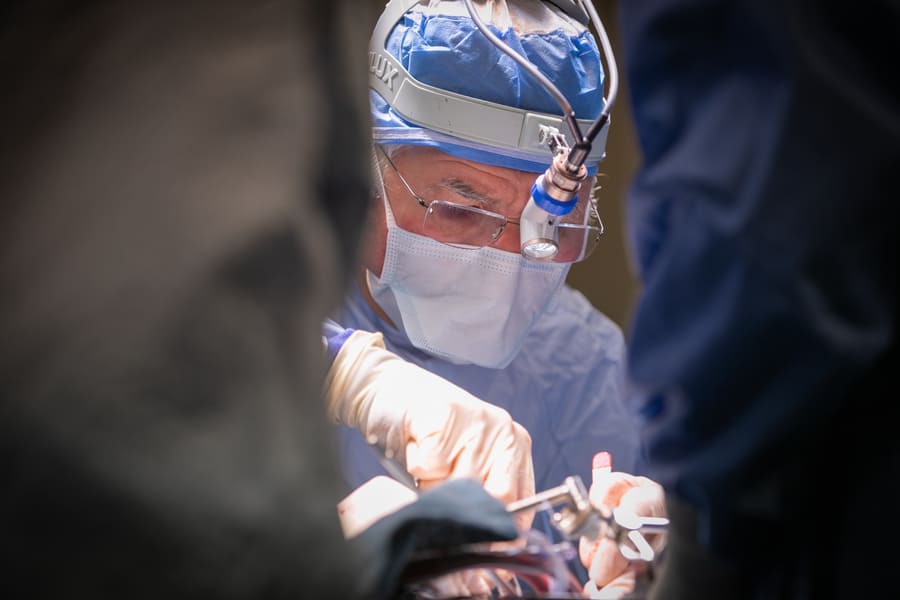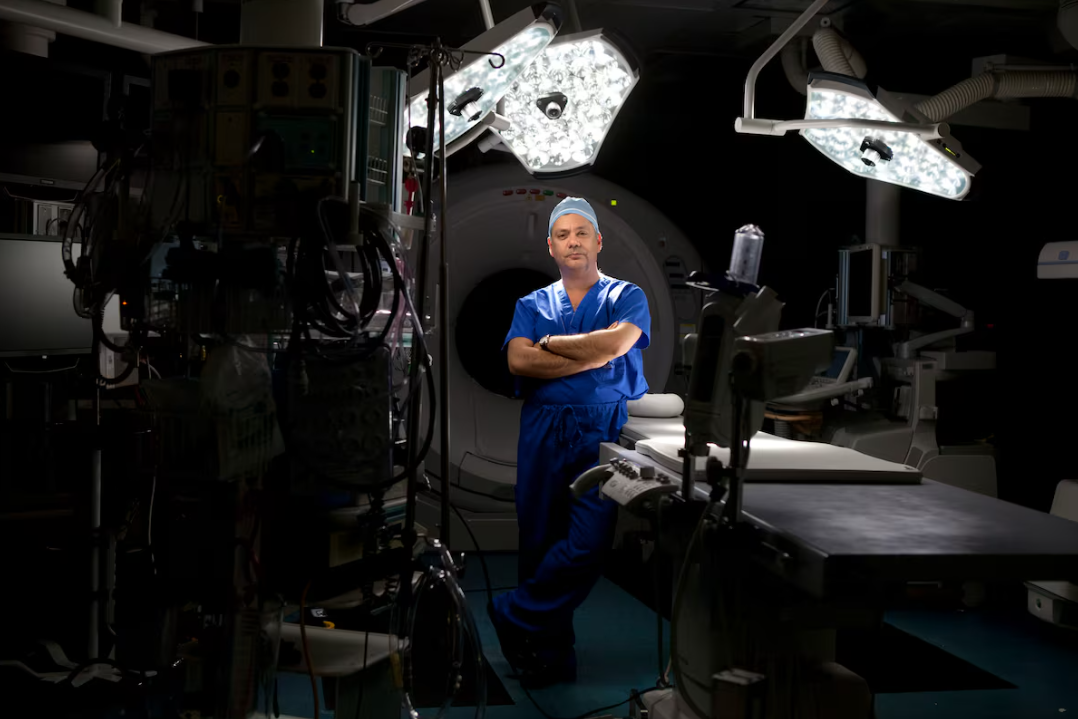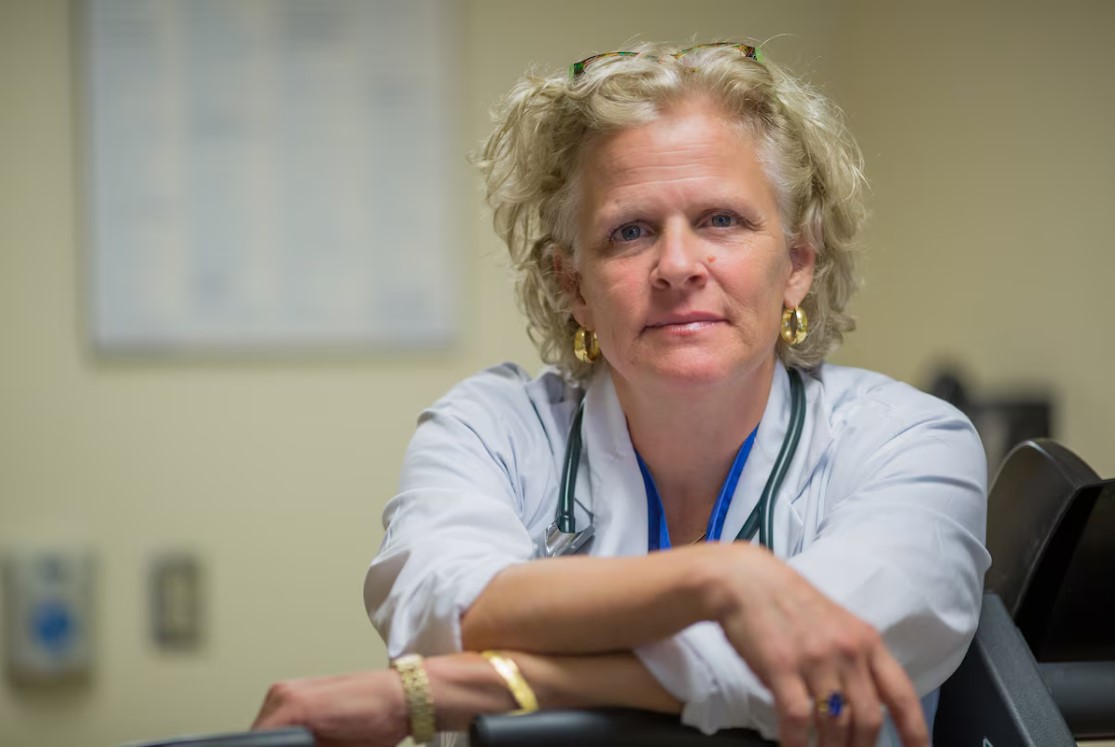Robi Van Belkom, pictured (L) a few hours after her TAVI procedure. Only a few months later, she walked a total of 265.5 km during April. (Photos: Courtesy Robi Van Belkom)
Thanks to a minimally invasive procedure performed at the Peter Munk Cardiac Centre, 59-year-old Roberta (Robi) Van Belkom feels like a whole new person.
“I feel amazing, like I’m walking on air,” says Robi. “I wish I could tell everyone not to hesitate if you ever need this.”
Robi is an active, frontline worker with a passion for giving back to her community. She recently received an Inspirational Citizen of the Year award from the City of Brampton.
But it’s been a long journey for her.
At just 32, Robi was diagnosed with Hodgkins Lymphoma. The new mother spent the next 19 months fighting for her life, enduring chemotherapy and upper body radiation.
Although her treatment was successful, there was an unintended consequence of cancer therapy. Because of the area of radiation, Robi’s cardiologist warned her she may begin to experience issues with her heart later in life.
Aortic calcification due to radiation
It was last summer when Robi started to feel pain in her chest and shortness of breath. After fainting one day at work, she called her cardiologist, who immediately referred her to Dr. Eric Horlick at the Peter Munk Cardiac Centre.
Calcium deposits had formed on Robi’s aortic valve, between the left heart and the main artery carrying blood to the rest of the body. The deposits were severe enough to reduce blood flow through her valve – a condition called aortic valve stenosis.
“Patients treated for Hodgkins Lymphoma often experience aortic calcification due to radiation,” says Dr. Horlick, an interventional cardiologist at Peter Munk Cardiac Centre and Professor of Medicine at University of Toronto.
“If not treated, it can lead to heart failure and become fatal.”
To treat the condition, Robi would need a new aortic valve. There are two methods to replace a valve; the first being open-heart surgery, and the second a minimally invasive procedure called a Transcatheter Aortic Valve Implantation (TAVI).

Every week, a team of Peter Munk Cardiac Centre cardiologists, cardiac surgeons, imaging specialists and anesthesiologists meets to review patients needing a new valve. Some patients are better candidates for open-heart surgery, while for others it’s safer to undergo a TAVI.
The team will decide which method to offer to the patients based on a detailed review of their file and images. Depending on the case, one or more team members would have already met with the patient to discuss their unique situation.
Given Robi’s medical history, open heart surgery was considered too risky. Her aorta posed a concerning risk of stroke, and for her, a TAVI was the optimal strategy.
By guiding a long, narrow tube called a catheter through her leg, a new valve was carefully maneuvered to her heart and implanted inside the existing narrowed valve, pushing it aside. TAVI valves are made of natural tissues from the heart of either a cow or pig.
“The whole case takes about 35 minutes, and patients can often go home within a day,” says Dr. Horlick. “It’s a great alternative for an increasing number of patients based on rigorously collected clinical trial data.”
Robi’s procedure took place in January, before procedural activity was reduced to accommodate COVID-19 patients.
‘I give back to my community because I feel so blessed’
Today, her heart allows her to live an active life with ease. She does not take it for granted.
“I lost 30 pounds. I walk a minimum of 10,000 steps a day,” Robi says. “I recently finished a Mount Kilimanjaro walk and did it in half the time.
“I’m so thankful to the TAVI team at the Peter Munk Cardiac Centre. They explained everything to me, made me feel comfortable, and from start to finish I felt in very good care.”
Robi’s healthcare journey, from cancer to cardiovascular disease, has inspired her to give back to her community. Last year, she joined a challenge to sew 1,000 masks, and even began creating scrubs for her local hospital.
She hangs the masks on a wooden tree at the end of her walkway, affectionately known as “the mask tree.” People walking by can help themselves.
“I give back to my community because I feel so blessed, but I also know what it’s like to not have this luck,” says Robi.
“It’s been a long journey, but I feel amazing now. I’m looking forward to seeing what’s in store for me and my new heart.”



